Are you struggling to find fun activities to keep your preschooler entertained? We’ve compiled a list of 22 fun preschool activities that are sure to captivate and keep your child engaged and entertained for hours on end.
With preschool activities ranging from sensory play to arts and crafts, keeping young children engaged can be a challenge, but with these activities, you can turn any ordinary day into an unforgettable adventure.
Whether you’re looking for indoor or outdoor activities, there’s something for everyone. These activities are perfect for bonding with your children and creating precious memories together.
1. Paper Towel Drip Painting
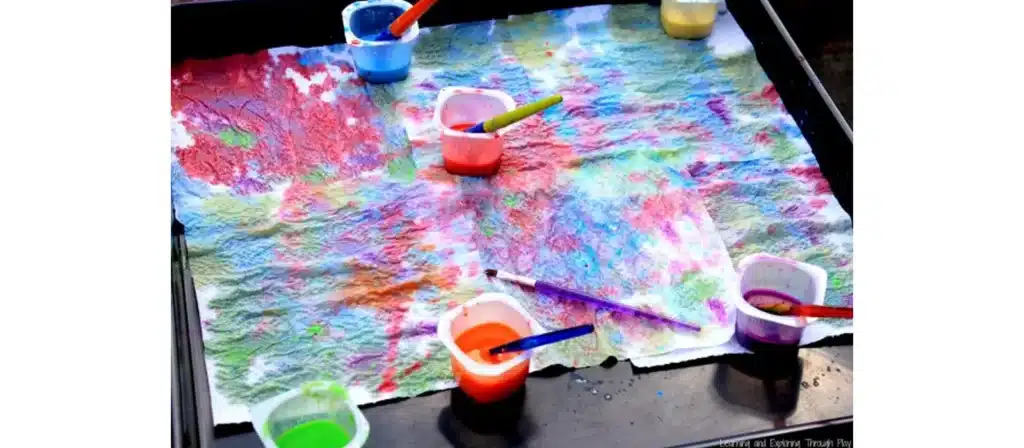
Paper Towel Drip Painting is a visually stimulating activity that encourages creativity and teaches color mixing. To start, you’ll need paper towels, washable watercolors, and droppers. Children can use the droppers to apply different colors to the paper towels, watching as they blend into beautiful patterns. This activity is excellent for fine motor development and understanding color relationships.
2. Preschool Activities Bubble Wrap Printing

Bubble Wrap Printing turns ordinary materials into a fantastic art exploration. You will need bubble wrap, paint, and sheets of paper. Spread paint over the bubble wrap, then press the paper onto it to print the bubbly textures. This activity is great for sensory play and can be used to teach patterns and symmetry. Additionally, it’s a delightful way for children to explore cause and effect as they see how their actions transfer designs from bubble wrap to paper.
3. Create a Letter Parking Lot
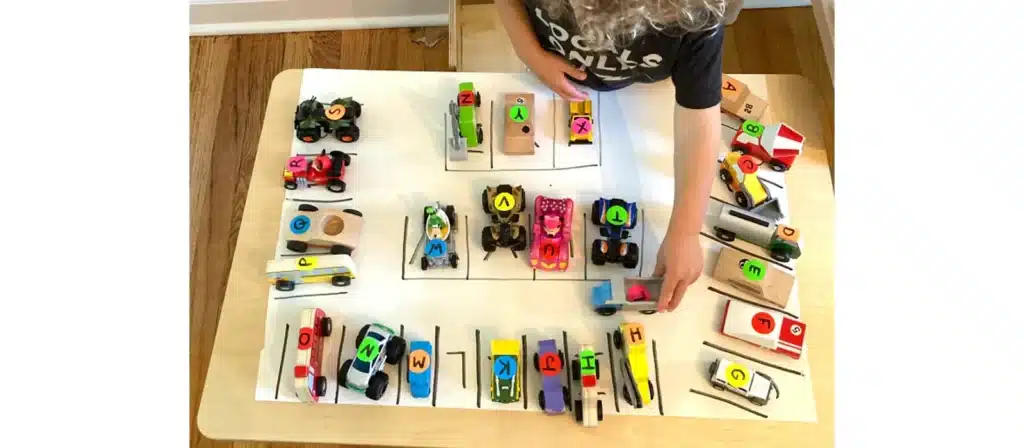
Creating a Letter Parking Lot combines literacy with fine motor skills and spatial awareness. Use tape on a flat surface to create parking slots, each labeled with a different letter. Children can drive small toy cars into the designated spots according to the first letter of the car’s “name” (e.g., Police car in ‘P’). This activity is a playful way to reinforce letter recognition and can be expanded to practice spelling simple words.
4. Play Kick the Cup
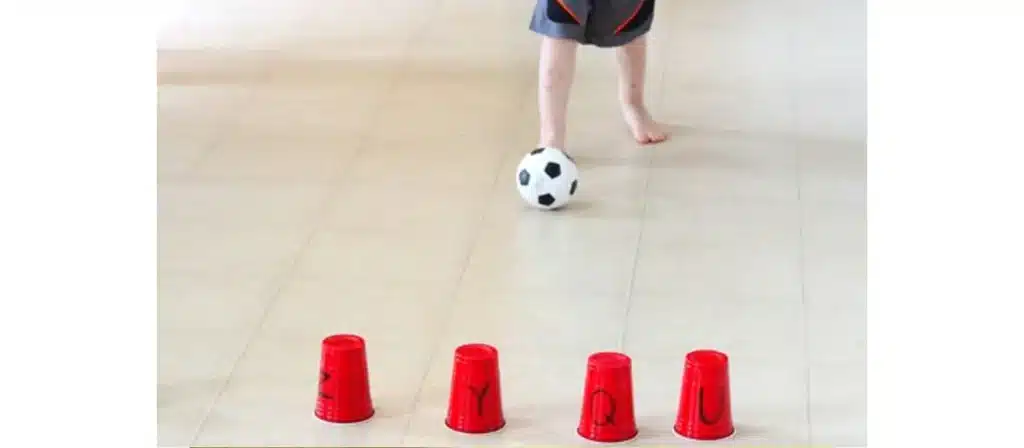
Kick the Cup is an active game that helps burn off energy while reinforcing number learning. Set up several plastic cups, each marked with a number, in a line or scattered around. Children kick a ball to knock over the cups, and then they can practice counting or even adding the numbers on the cups they’ve knocked down. It’s a simple setup that provides a lot of fun and learning opportunities.
5. Explore the Alphabet Sensory Bin

An Alphabet Sensory Bin is an excellent tool for tactile learning. Fill a large container with items like sand, rice, or beans, and hide plastic letters inside. Children can dig through the bin to find letters and spell simple words. This activity enhances letter recognition, vocabulary building, and sensory processing skills, making it a versatile addition to any preschool curriculum.
6. Play Dough Recipes

Offering a variety of Play Dough Recipes allows children to engage in sensory play while unleashing their creativity. You can provide recipes for making play dough at home or in class, incorporating natural colorants and textures like glitter or small beads. Playing with dough helps improve hand strength and coordination, and can even be a calming activity for energetic preschoolers.
7. Let the Bottle Calm Down

“Let the Bottle Calm Down” is an excellent activity for helping preschoolers manage their feelings and calm down during stressful moments. To create a calming bottle, fill a clear plastic bottle with water, glitter glue, and a hefty amount of glitter. Kids can shake the bottle and watch the glitter slowly settle at the bottom, providing a visual tool to help them relax and regain focus. This preschool activities not only aids in emotional regulation but also introduces basic concepts of fluid dynamics and gravity.
8. Digging in the Dirt

“Digging in the Dirt” can be set up in an outdoor sandbox or a large container filled with soil. Hide small items like plastic bugs, coins, or toys in the dirt and provide children with tools like shovels and brushes. This activity promotes fine motor skills, teaches basic excavation and archaeological concepts, and can be used to discuss nature and the environment. It’s a tactile experience that encourages exploration and satisfies the curiosity of young minds about the natural world.
9. Play Dress Up Games
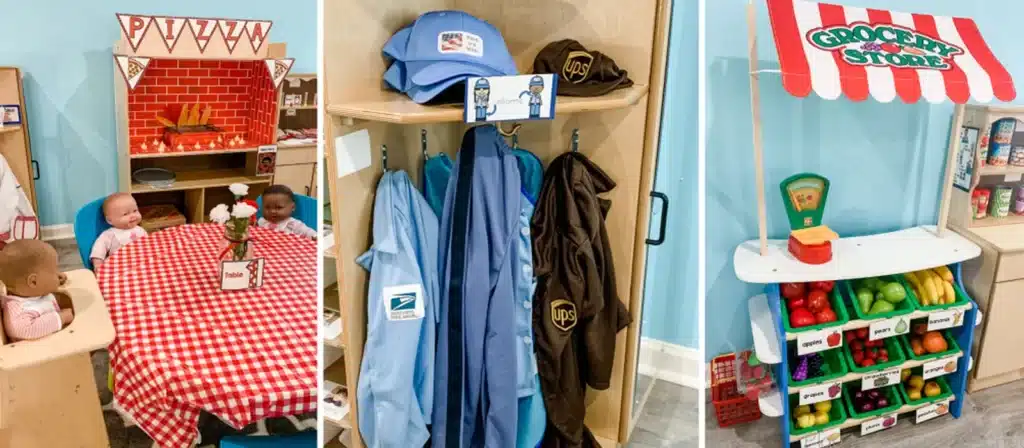
Stock a dress-up box with various costumes, hats, and accessories. Children can choose different characters to portray, from firefighters to doctors, princesses to superheroes. This preschool activities enhances communication skills as they engage in role-playing and storytelling, building narratives and solving problems in character. It’s also a perfect opportunity for children to express themselves and understand different community roles.
10. Unicorn Fizz

Unicorn Fizz is a magical science activity that introduces basic chemical reactions in a fun and colorful way. Combine baking soda, vinegar, food coloring, and glitter in a tray to create a fizzing reaction that looks like a unicorn’s magical powers. This experiment is not only visually appealing but also interactive and educational, teaching children about cause and effect and encouraging them to predict and observe what happens when ingredients are mixed.
11. Ice Cube Painting

Ice cube painting is an innovative way to explore colors and temperatures. Freeze colored water in ice cube trays with popsicle sticks for handles. Once frozen, children can use the colored ice cubes to paint on paper, creating a watercolor effect as the ice melts.
12. Finger Painting
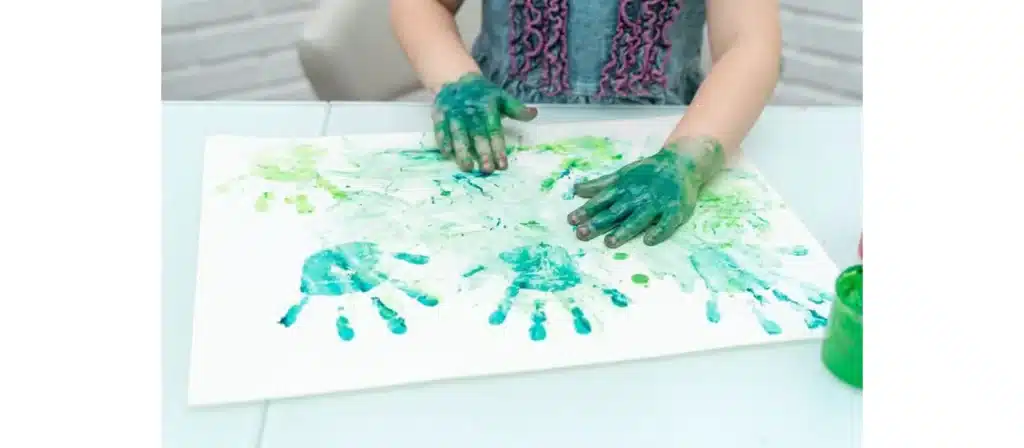
Finger painting is a sensory-rich activity that encourages artistic expression without the constraints of brushes or tools. Set up stations with non-toxic paint and large sheets of paper, allowing children to use their fingers and hands to create designs.
13. Sticker Activities

Provide children with sheets of colorful stickers and outline images on paper where they need to match or fill in the stickers. You can also create sticker storyboards where children create their scenes or stories on poster boards using stickers. This activity can be themed around seasons, holidays, or educational concepts like alphabet matching, where stickers are used to fill in the initial letters of images shown (e.g., ‘A’ for apple).
14. Scavenger Hunts
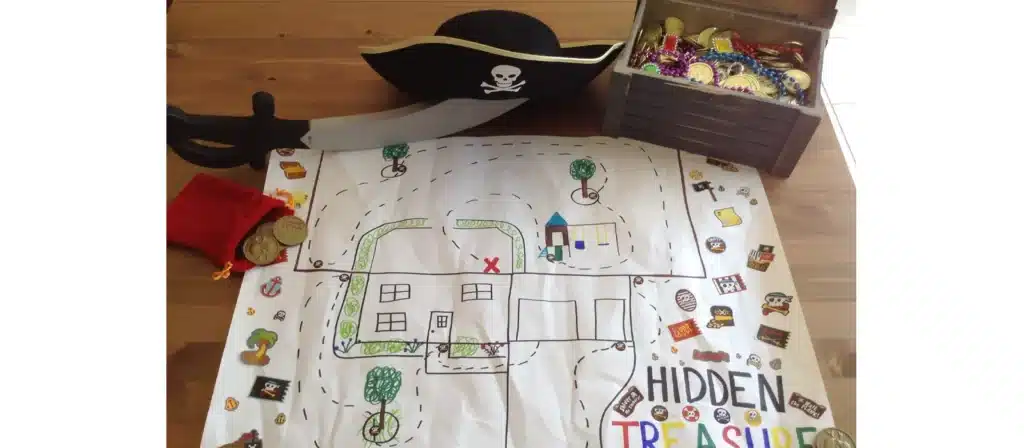
Create a list of items for children to find around the classroom or outdoors. Each item can be linked to a clue or a riddle to solve, making the activity both physically engaging and mentally challenging. This could involve finding objects with specific colors, shapes, or numbers.
15. Sorting Box Play
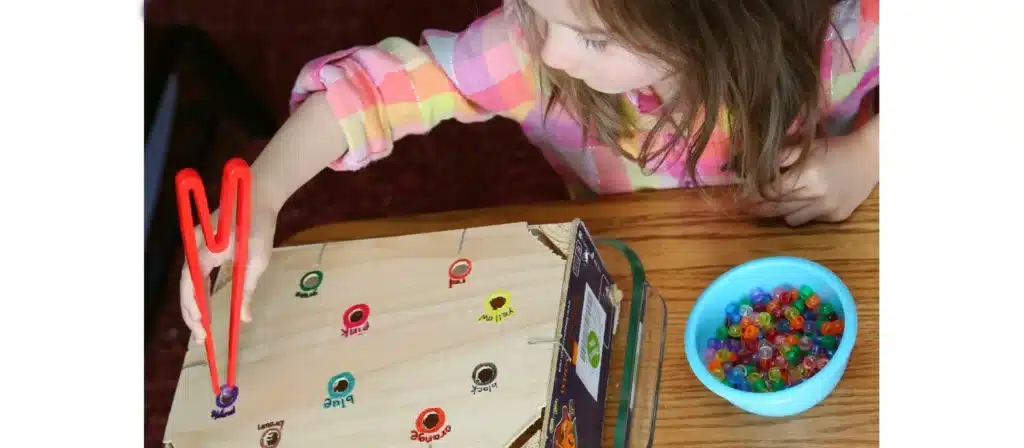
Sorting box play is a simple yet effective cognitive development activity. Use boxes or segmented containers and provide various items for children to sort. These can be colored balls, blocks, or objects from nature. Sorting can be based on size, color, texture, or type. This preschool activities introduces basic math concepts, enhances organizational skills, and can be adapted to different complexity levels depending on the age group.
16. Water Gun Painting

Water gun painting adds a twist to traditional painting methods and is a perfect outdoor activity. Fill water guns with paint diluted with water and let children spray onto a paper canvas fixed to an easel or fence. This activity is exhilarating and liberates children from the confines of brushwork, allowing them to experiment with mixing colors and creating abstract patterns.
17. Find the Shapes
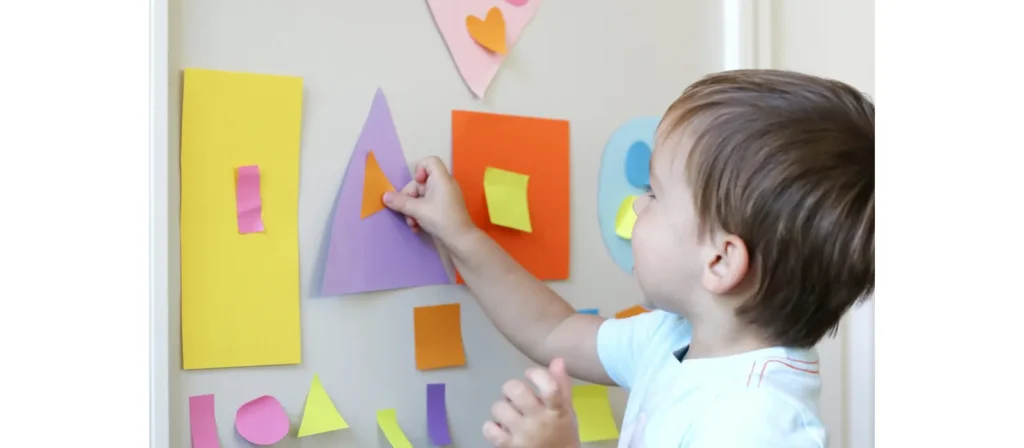
‘Find the Shapes’ is an educational game where children are asked to identify and locate shapes around the classroom or outdoors. Use this activity to teach geometry by having children search for circles, squares, triangles, and more in their surroundings. It can be extended to more complex shapes as children advance, helping them to connect with the geometrical aspects of their environment.
18. Count and Bead

Provide children with strings and colorful beads, and challenge them to create necklaces based on number patterns (e.g., one red bead, two blue beads, three green beads). This not only aids in their counting skills but also in pattern recognition and sequencing, which are foundational math skills.
19. Shape Sorting
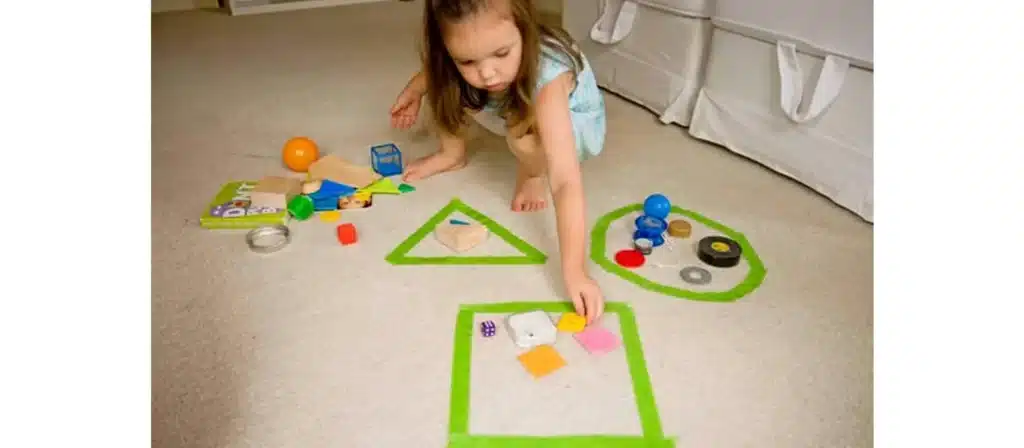
Shape sorting is a fundamental activity that helps children recognize different geometric forms. You can create a shape sorting game with homemade or store-bought cutouts in various shapes and colors. Introduce shapes like circles, squares, triangles, and more complex forms like hexagons and octagons as children become more proficient. It can be extended by asking children to sort shapes by color or size, adding layers of challenge.
20. Balloons and Baking Soda

Fill balloons with baking soda and attach them to bottles filled with vinegar. As children release the baking soda into the vinegar, they can watch the balloon inflate, which teaches them about gases and reactions in a visually engaging way.
21. Oil and Water Experiment

Fill a clear container with water and add a few drops of colored oil. As children stir the mixture, they’ll notice that oil and water do not mix, creating colorful droplets floating on top. Adding glitter or small floating objects can enhance the visual effect and make the experiment more enjoyable.
22. Paper Plate Art

Paper Plate Art is a versatile and creative craft activity. Provide children with paper plates and various art supplies like markers, glue, glitter, and construction paper. They can create animal masks, seasonal decorations, or abstract art. This activity allows for free expression and encourages children to translate their imagination into tangible creations. It’s also an excellent opportunity for discussing preschool themes like seasons, animals, or holidays depending on the project.
Conclusion
Engaging in these 22 fun preschool activities will ensure that children are not only entertained but are also learning important concepts and skills that will aid their development. Each activity is designed to be both educational and enjoyable, helping to nurture a love of learning in young children. By incorporating these activities into your curriculum, you provide your preschoolers with a rich learning environment filled with joy and exploration.













